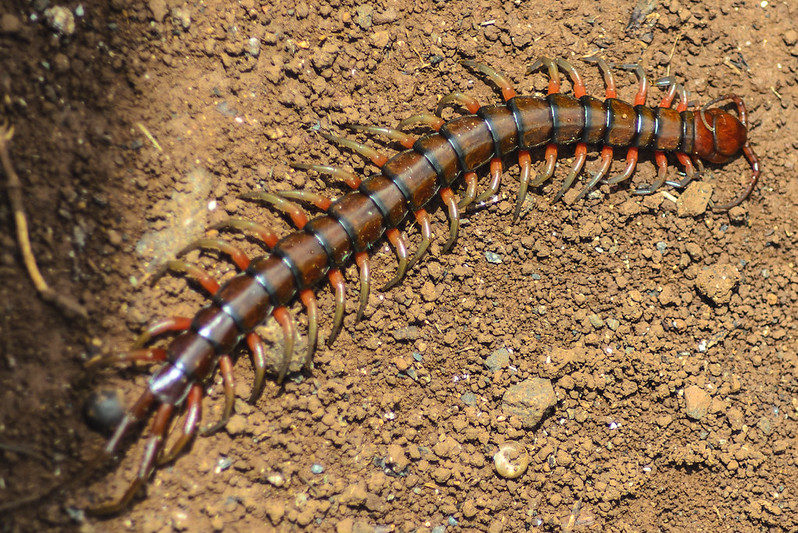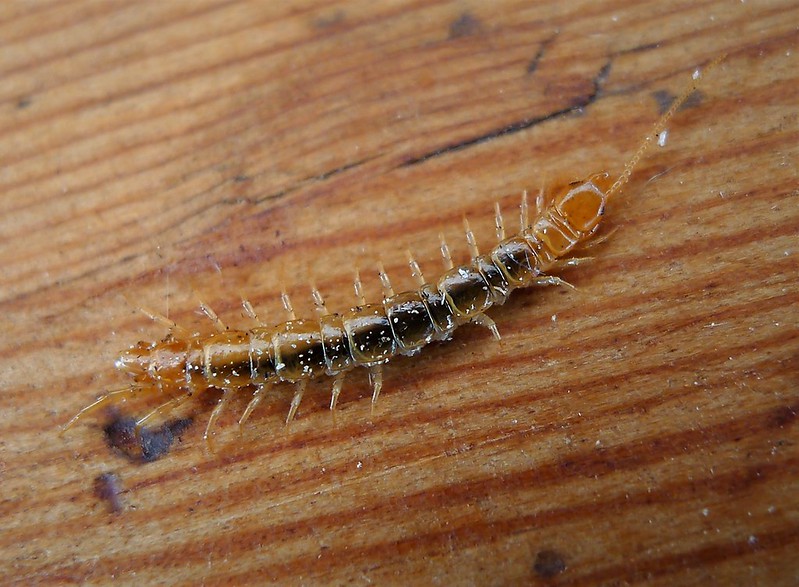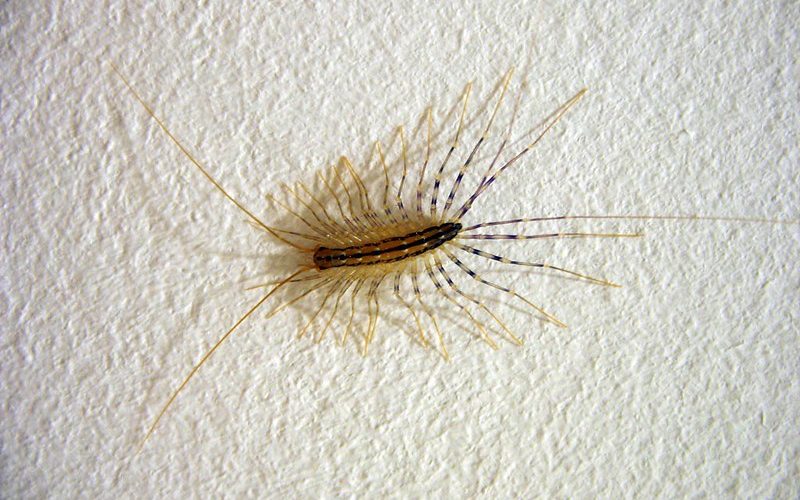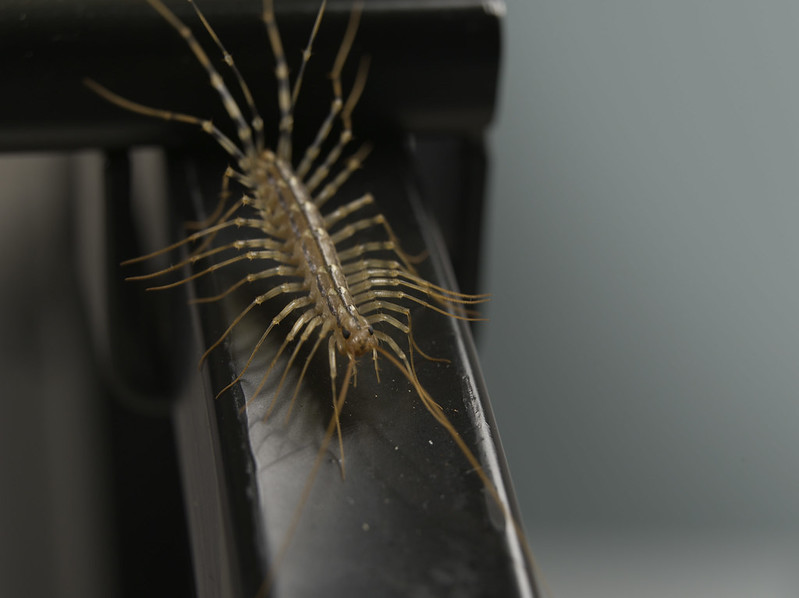Centipedes comprise a diverse group of predatory arthropods. Although around 3,000 species of centipedes have been studied and some scientists believe that there are more than 8,000 worldwide.
House centipedes (Scutigera coleoptrata), are the most familiar to people and the most common request for pest treatment professionals.
These yellow-gray centipedes can grow up to 15 pair of legs. They may be found outside, where they will thrive in damp, cool, and dark conditions, or they may live inside buildings — mostly in basements, crawl spaces, ground-floor rooms, and typically-moist areas such as kitchens, laundry rooms, and bathrooms.
If you have centipedes inside your home, they pose very little danger to your physical health in themselves. Their presence does, however, indicate a moisture or humidity problem, which can indeed be harmful for your health.
As house centipedes, which are predators, commonly eat pest bugs like cockroaches and clothes moths, they can be quite helpful.
How to Get Rid of House Centipedes
The single best way to get rid of house centipedes on your property would be to render your home unlivable — something that will also, incidentally, lead to health benefits for you, and help maintain the structural integrity of your property.
House centipedes have primitive respiratory systems that feature spiracles — small holes on their bodies, through which oxygen can be delivered directly into their tissues.
Unlike many other arthropods, house centipedes cannot open and close their spiracles. To prevent dehydration and respiratory distress, they require humid or moist environments. If those aren’t present, centipedes will not be able to survive.
The Environmental Protection Agency generally recommends that people take steps to maintain relative humidity levels between 30 and 50 percent throughout their homes to prevent health complications — including those that result from mold and bug infestations that tend to follow excessive humidity.
To fight excessive humidity, you can:
- Have any leaky pipes or gutters repaired as soon as possible to put a halt to localized moisture buildup.
- Increase ventilation in the humid areas of your home by opening windows often, or by installing exhaust fans in rooms like kitchens and bathrooms.
- Physically wipe down any buildup of condensation as soon as possible, including by, for instance, drying your bathtub after use.
- Purchase a dehumidifier to deal with a chronic humidity problem that cannot be fixed with increased ventilation. Basements and crawlspaces are both often hard to ventilate, after all.
You can also enlist the help of natural centipede repellents, which include neem oil, cayenne pepper, and cedar essential oil.
Your other option would be to call a professional pest management company, or to take out the bug spray and bug bombs and get to work. Bug bombs have certain health risks, but are generally effective at wiping out all pest infestations within a home, not just centipedes. Remember, house centipedes kill other nasty bugs in your home too, and by solely focusing on them, you may find yourself dealing with other — worse — bugs in higher numbers.
How to Kill Centipedes in Sinks and Drains
Attracted by moisture, house centipedes are known to crawl up through pipes, emerging around sinks and drains in bathrooms and kitchens.
Pouring boiling hot water down the drains should help, but the most strongly recommended strategy will also actually give your pipes a nice cleaning. Pour vinegar into your sink, and follow that up with a sprinkling of baking soda.
How to Get Rid of Outdoor Centipedes
The best option for gardens tends to be sprinkling a healthy amount of diatomaceous earth. This will naturally fight both centipedes and numerous other pests.
Citations and Credits



